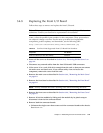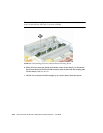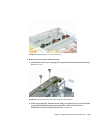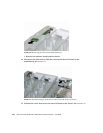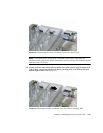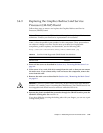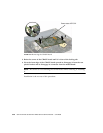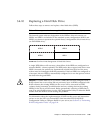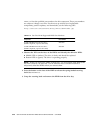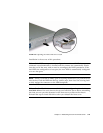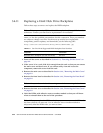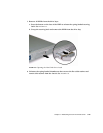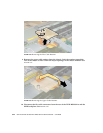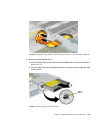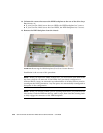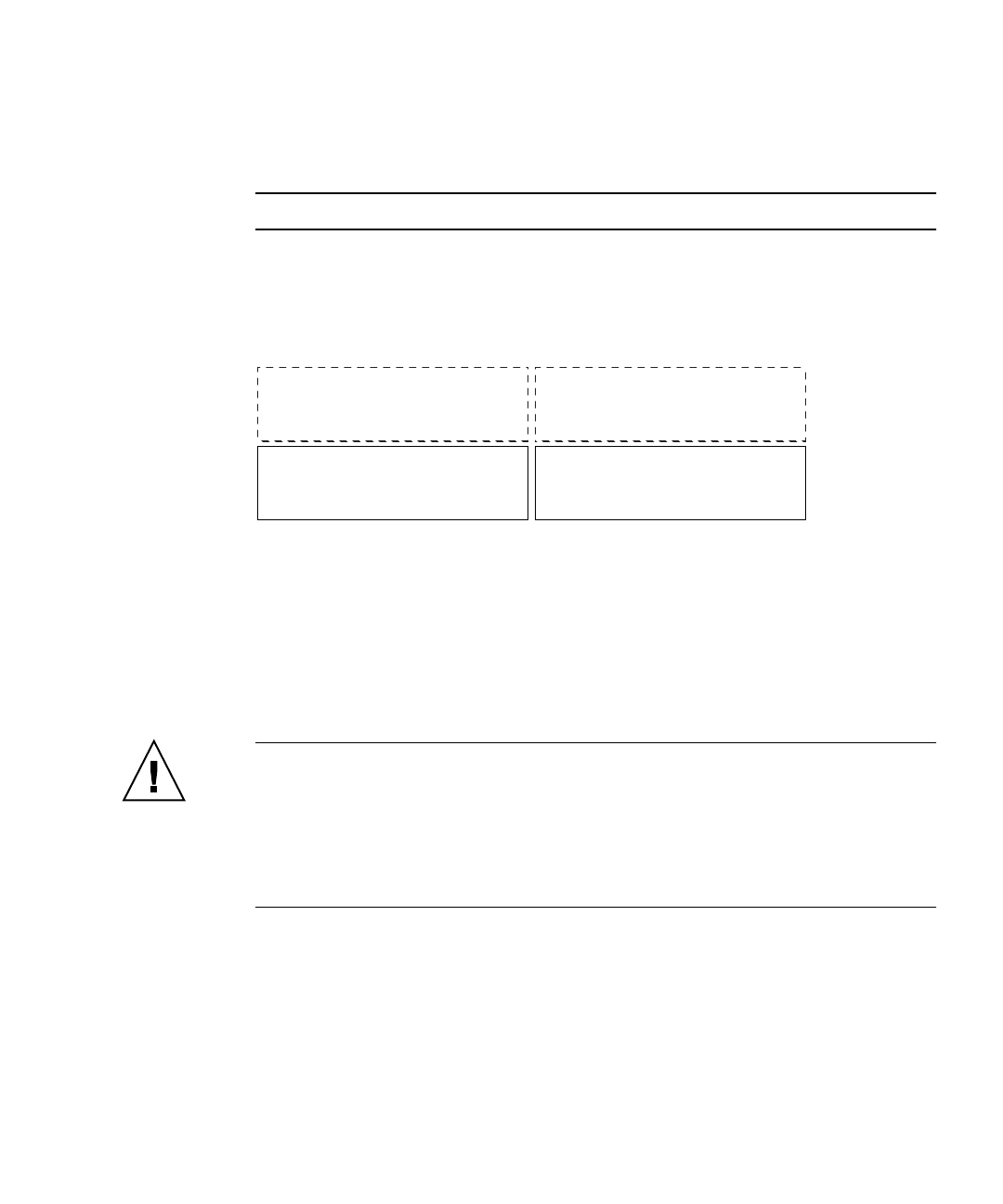
Chapter 3 Maintaining the Sun Fire X4100 Server 3-39
3.4.10 Replacing a Hard Disk Drive
Follow these steps to remove and replace a hard disk drive (HDD).
Note – This component is a hot-swappable CRU and can be replaced by anyone.
The internal system software designation of the HDDs is shown in
FIGURE 3-35.
HDD 0 and HDD 1 are included in the standard system configuration; HDD 2 and
HDD 3 are shown to represent the optional factory configuration of four hard drives
(no DVD-ROM drive).
FIGURE 3-35 Sun Fire X4100 Designation of Hard Disk Drives
A single HDD failure will not cause a data failure if the HDDs are configured as a
mirrored RAID 1 volume (optional). The HDD can be hot-swapped, and when a new
HDD is inserted, the contents are automatically rebuilt from the rest of the array
with no need to reconfigure the RAID parameters. If the bad HDD was configured as
a hot-spare, the new HDD is automatically configured as a new hot-spare to mirror
the data from the good HDD.
Caution – Possible data loss: If you insert a HDD that has been configured with a
RAID volume into a server that did not previously have its HDDs configured with
RAID volumes, the existing HDD(s) in the server will be converted to RAID
volumes during automatic synchronization and any existing data on the existing
HDD(s) in the server will be erased. Before permanently removing a HDD that is
part of an active RAID volume, use the LSI Configuration Utility to delete the RAID
volume from the HDD to avoid causing this problem.
For information about the implementation of RAID on this server and instructions
on how to use the LSI Logic Fusion-MPT Serial Attached SCSI (SAS) BIOS
Configuration Utility to configure RAID for your server, see Section E.4, “Performing
RAID Configuration Tasks” on page E-41.
HDD 0 HDD 1
HDD 3HDD 2



